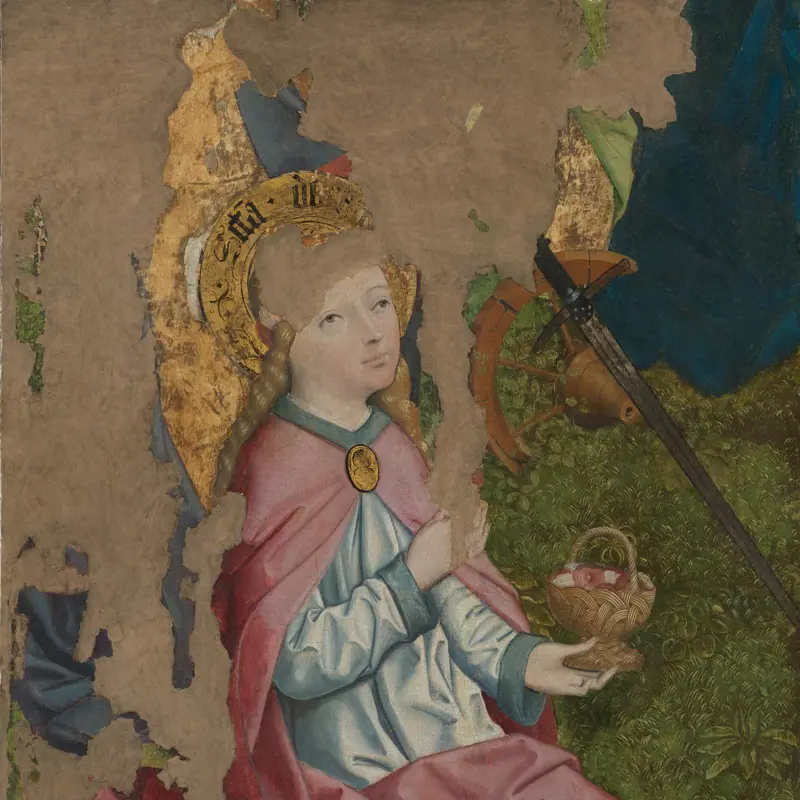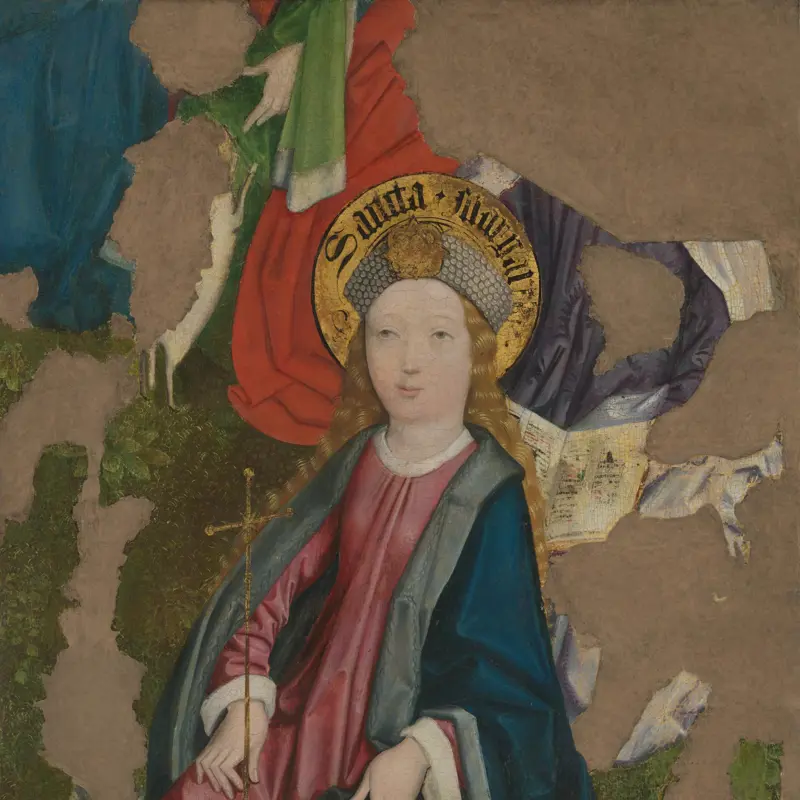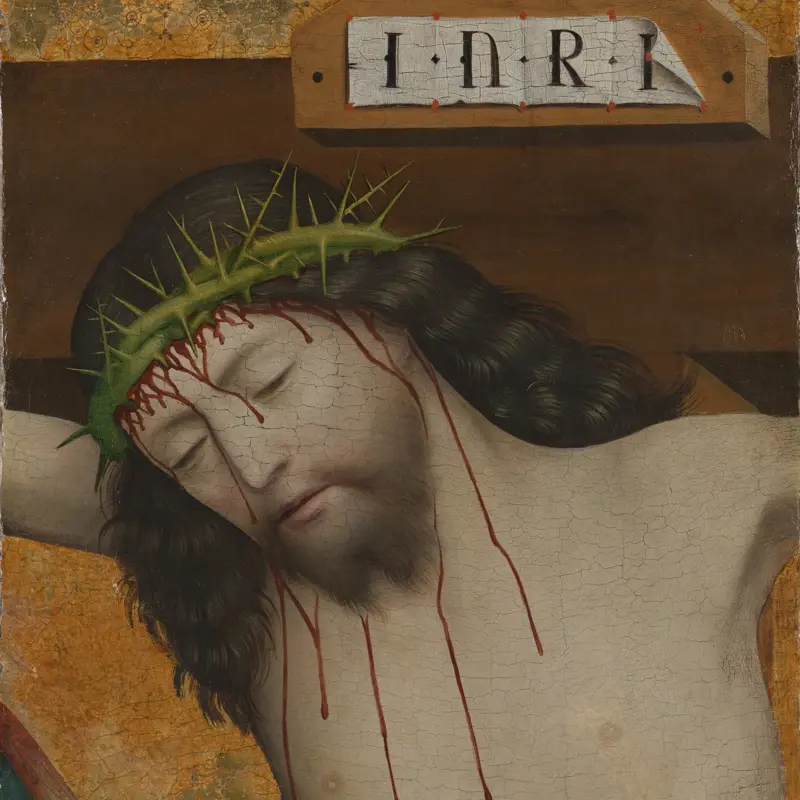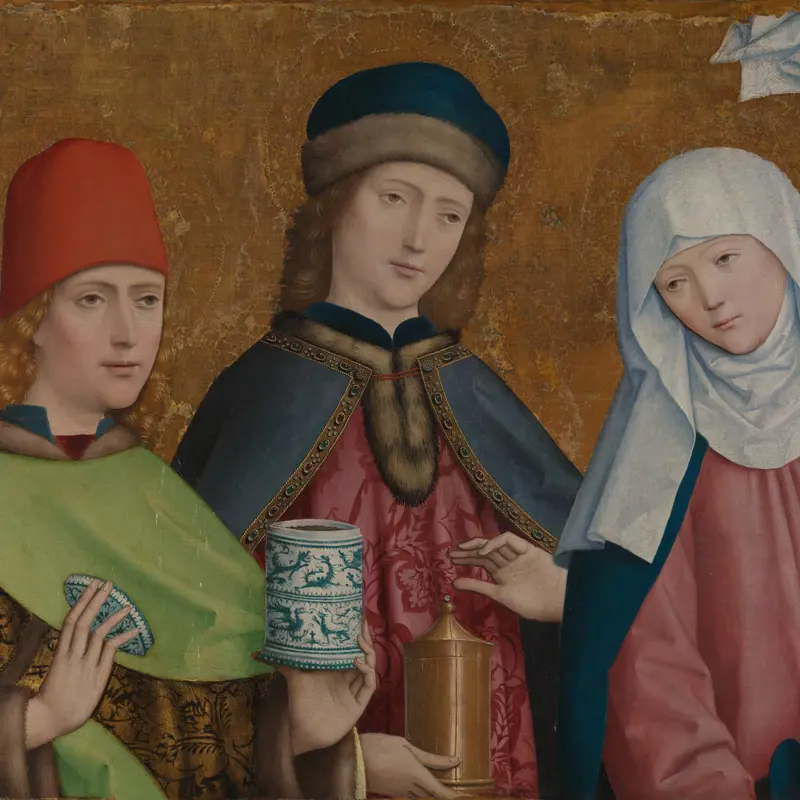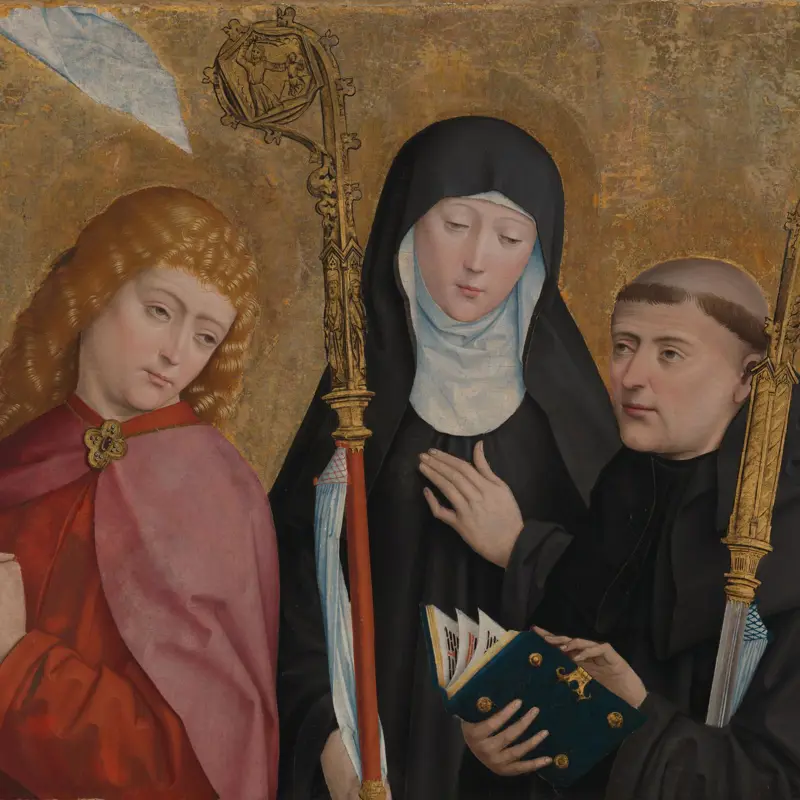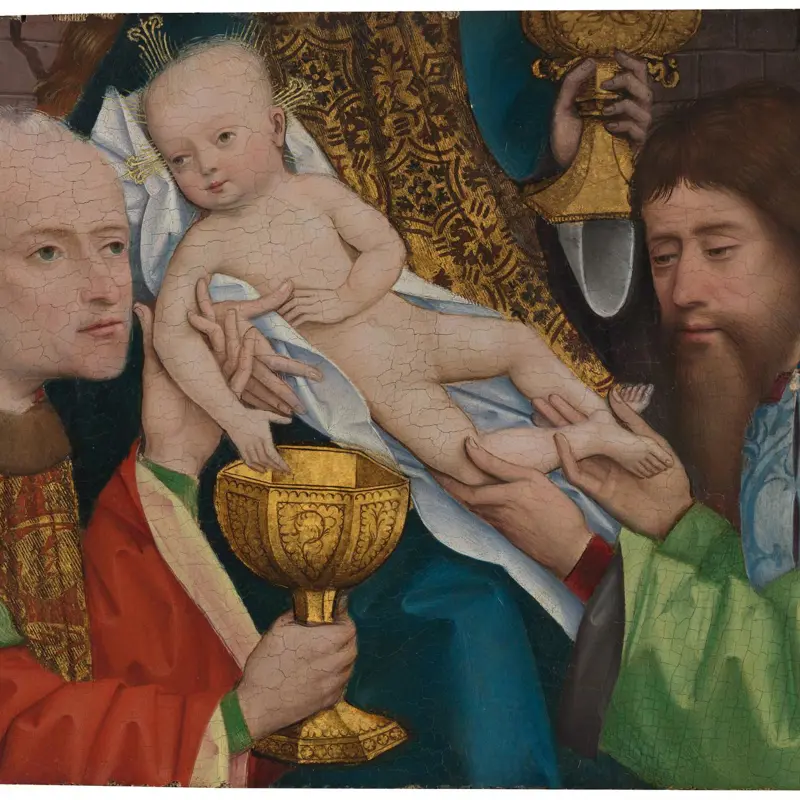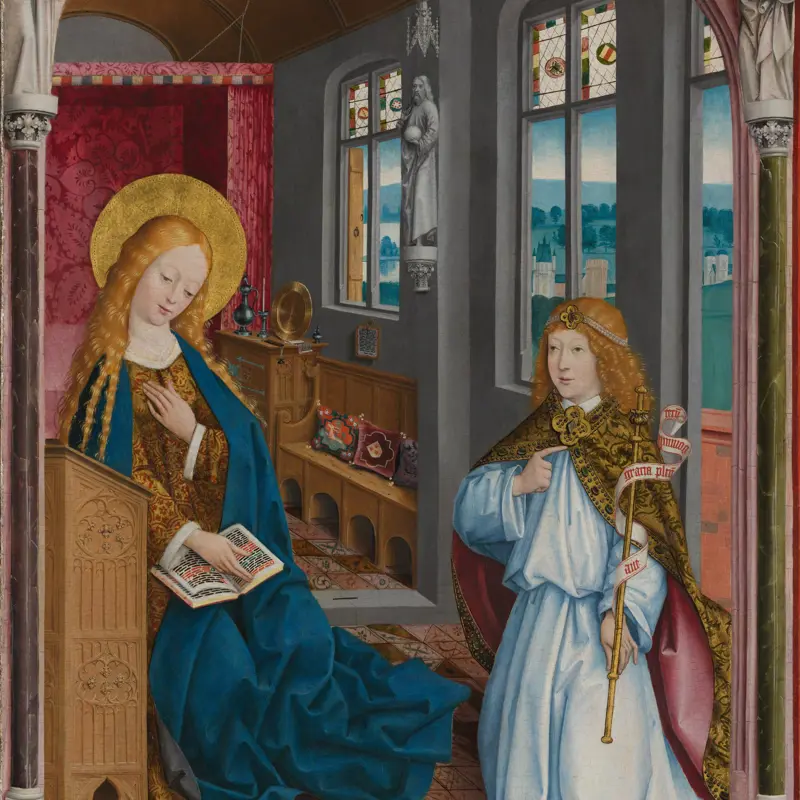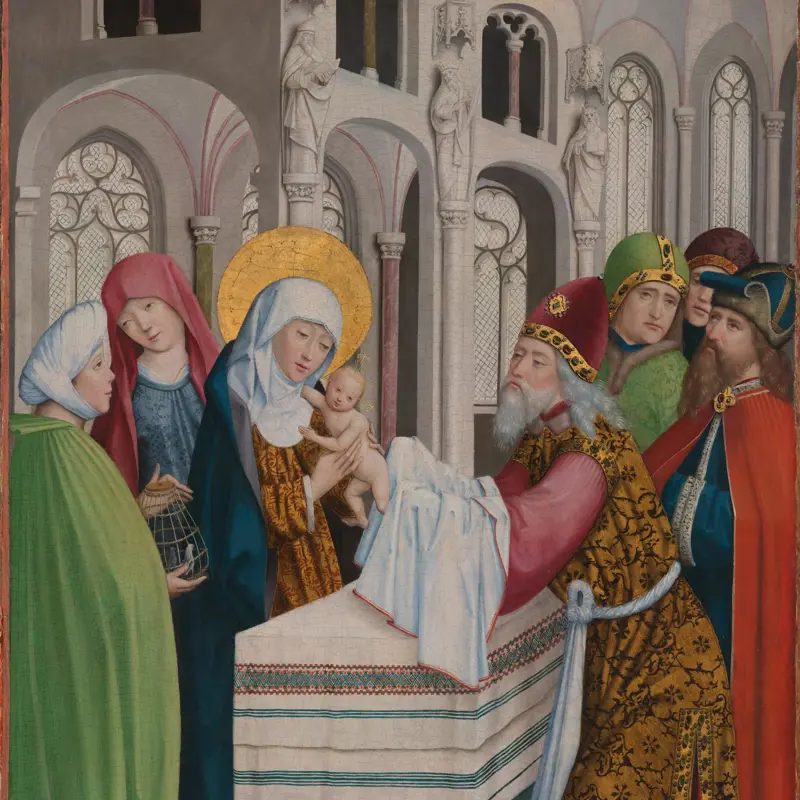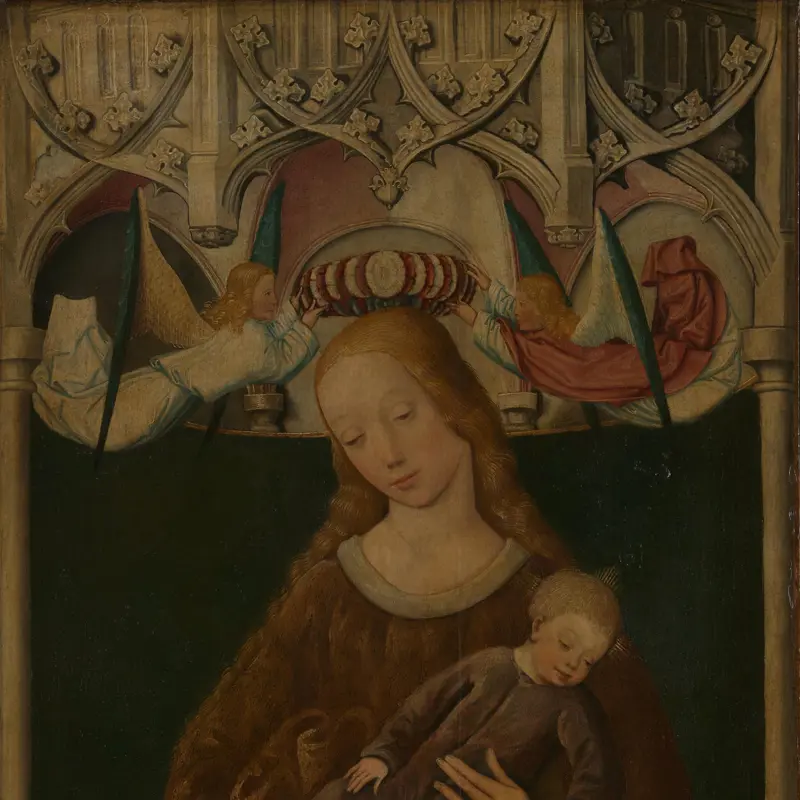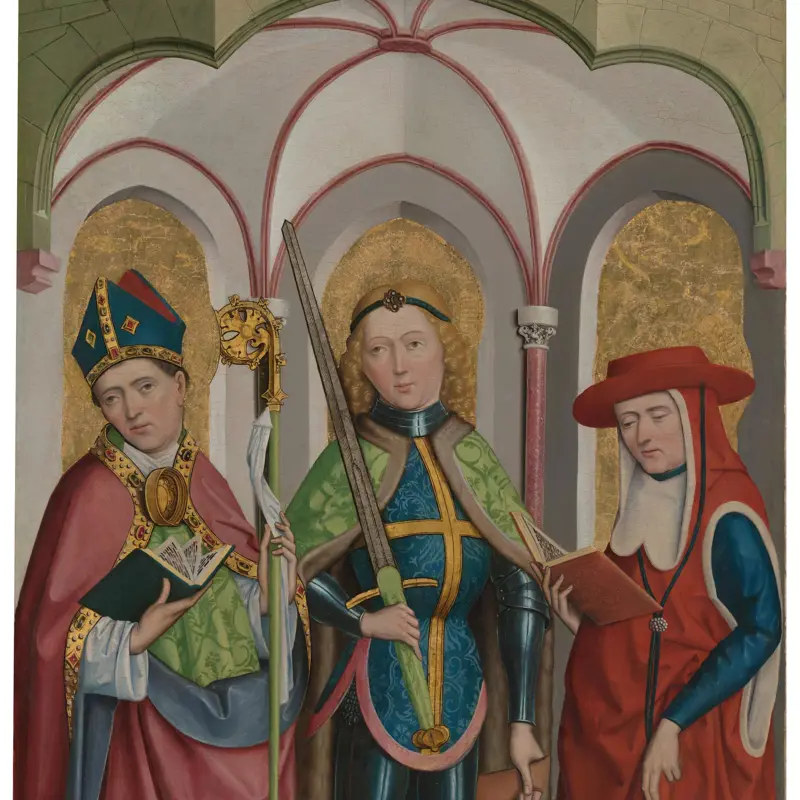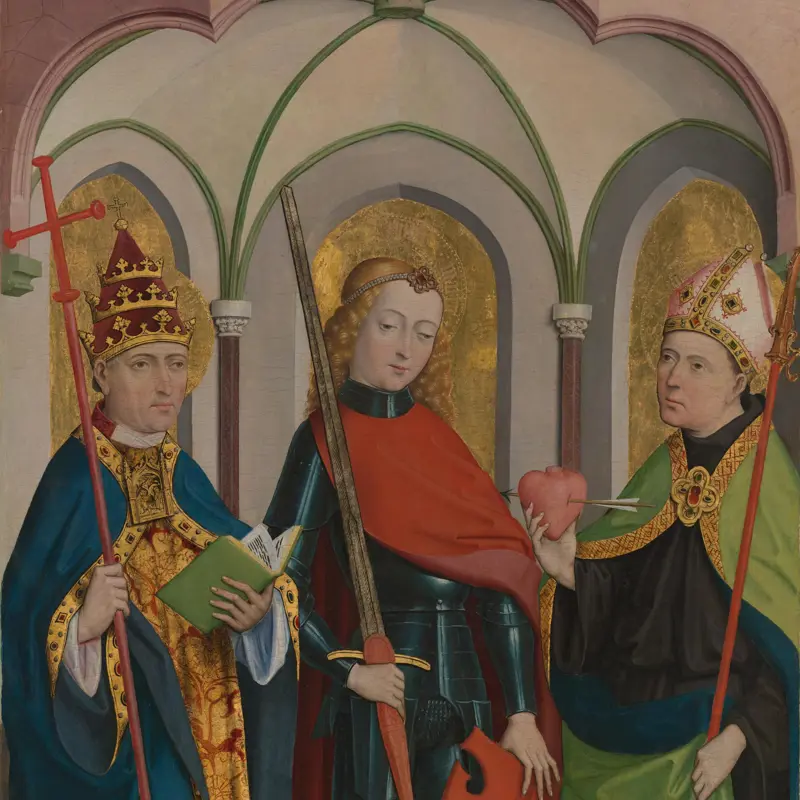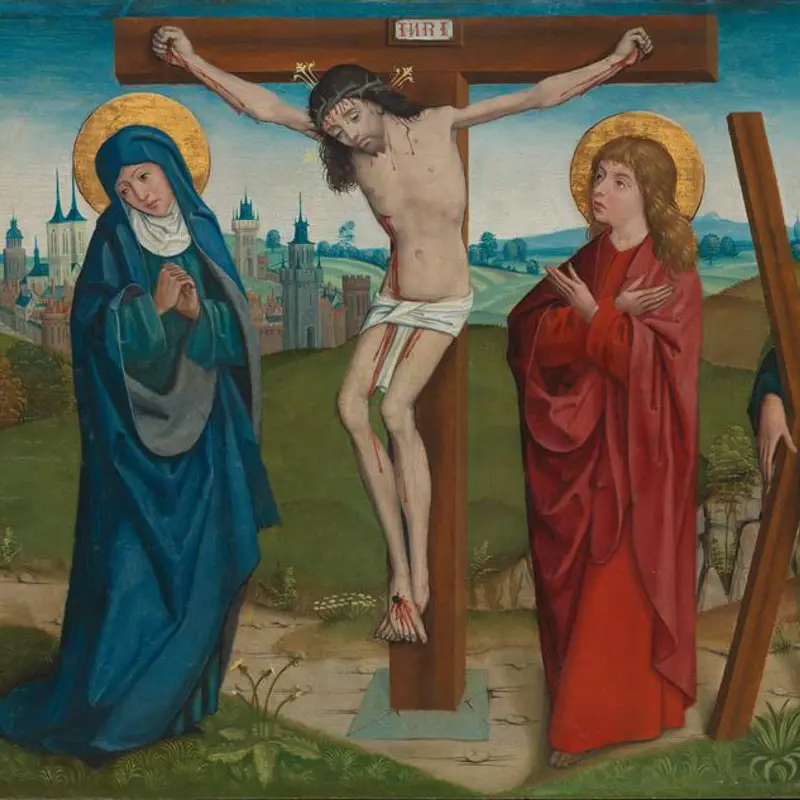Probably workshop of the Master of Liesborn (Johann von Soest?), 'Saint Dorothy', late 1470s to early 1480s
About the work
Overview
This is one of two fragments in the National Gallery’s collection of a larger work which showed the Virgin and Christ Child seated in a garden. It depicts Saint Dorothy, who lived in Caesarea (Kayseri in modern-day Turkey) in the fourth century.
Saint Dorothy is usually shown, as here, carrying a basket of roses. According to her legend she was killed for her faith on the orders of the Roman Emperor Diocletian. She was sure that she would enter paradise after her death, which she proclaimed was full of roses. As she was about to be decapitated she was mocked by a Roman scribe, Theophilus, who asked her to bring him some of these roses. Miraculously, Christ appeared as a young boy with a basket of the flowers.
On the ground behind Saint Dorothy are the attributes of Saint Catherine of Alexandria, who is also included in the painting: a broken wheel (the instrument of her torture) and a sword, with which she was eventually killed.
Key facts
Details
- Full title
- Saint Dorothy
- Artist
- Probably workshop of the Master of Liesborn (Johann von Soest?)
- Artist dates
- Active second half of the 15th century
- Part of the series
- Fragments from an Altarpiece of the Virgin and Saints
- Date made
- Late 1470s to early 1480s
- Medium and support
- Oil on wood (Netherlandish/West German oak, identified)
- Dimensions
- 80.4 × 48.3 cm
- Acquisition credit
- Bought, 1854
- Inventory number
- NG2152
- Location
- Not on display
- Collection
- Main Collection
Provenance
Additional information
Text extracted from the ‘Provenance’ section of the catalogue entry in Susan Foister, ‘National Gallery Catalogues: The German Paintings before 1800’, London 2024; for further information, see the full catalogue entry.
Bibliography
-
1848C.W.A. Krüger, Verzeichnis der Gemälde-Sammlung des Geheimen Regierungs-Rathes Krüger zu Minden, Minden 1848
-
1934A. Stange, Deutsche Malerei der Gotik, 11 vols, Munich 1934
-
1951R. Fritz, 'Der Katalog der Gemäldesammlung Krüger zu Minden', Westfalen, Hefte für Geschichte, Kunst und Volkskunde, XXIX/25, 1951, pp. 87-97
-
1952P. Pieper, Westfälische Maler der Spätgotik 1440-1490 (exh. cat. Landesmuseum für Kunst und Kulturgeschichte Münster Westfalen, 20 June - 30 September 1952), Münster 1952
-
1954P. Pieper, 'Westfälische Maler der Spätgotik 1440-1490. Ergänzungen zum Katalog', Westfalen, Hefte für Geschichte, Kunst und Volkskunde, XXXII, 1954, pp. 75-103
-
1959Levey, Michael, National Gallery Catalogues: The German Schools, London 1959
-
1962M. Levey, 'Eine Altartafel aus der Werkstatt des Meisters von Liesborn', Westfalen, Hefte für Geschichte, Kunst und Volkskunde, XL, 1962, pp. 272-7
-
1967A. Stange, Der deutschen Tafelbilder vor Dürer. Kritisches Verzeichnis, Munich 1967
-
1974W. Koenig, 'Anmerkungen und Ergänzungen zum Katalog der Sammlung Krüger', in W. Koenig, Studien zum Meister von Liesborn unter besonderer Berücksichtigung der Entstehungsgeschichte des Liesborner Hochaltars und der Sammlung Krüger, Quellen und Forschungen zur Geschichte des Kreises Beckum, Beckum 1974, vol. 6
-
1986P. Pieper, Die deutschen, niederländischen und italienischen Tafelbilder bis um 1530, Münster 1986
-
2001
C. Baker and T. Henry, The National Gallery: Complete Illustrated Catalogue, London 2001
-
2024S. Foister, National Gallery Catalogues: The German Paintings before 1800, 2 vols, London 2024
About this record
If you know more about this work or have spotted an error, please contact us. Please note that exhibition histories are listed from 2009 onwards. Bibliographies may not be complete; more comprehensive information is available in the National Gallery Library.
Images
About the series: Fragments from an Altarpiece of the Virgin and Saints

Overview
These two panels showing Saints Dorothy and Margaret are fragments of a larger painting which probably showed the Virgin Mary and Christ Child seated in a garden surrounded by female saints. The other saints probably included Agnes and Catherine. The panels come from a chapel in Lippstadt in the region of Westphalia in western Germany.
There are several other panels in the National Gallery’s collection painted by the same anonymous master. He has been named after the altarpiece that he painted for the Benedictine abbey at Liesborn, fragments of which are also in the Gallery’s collection.

